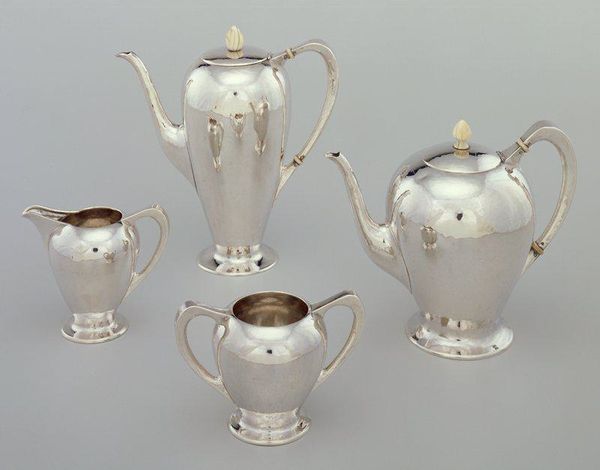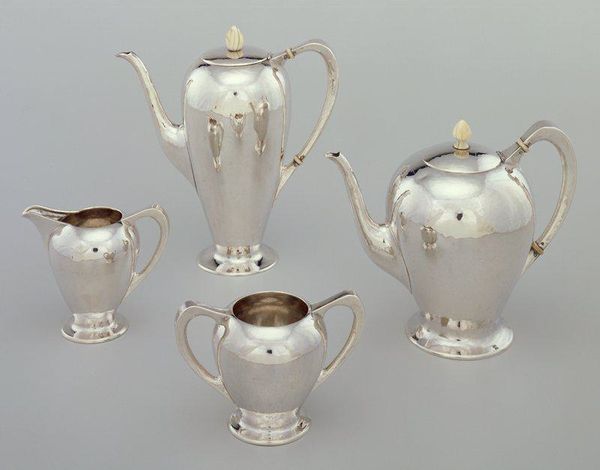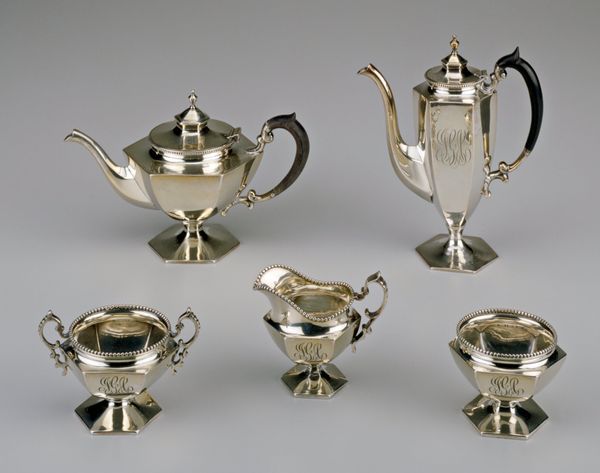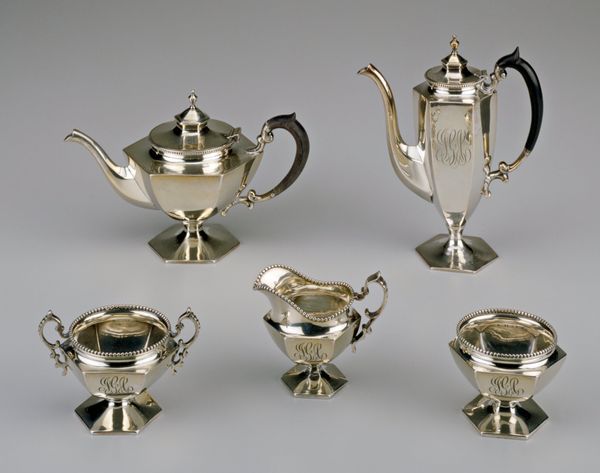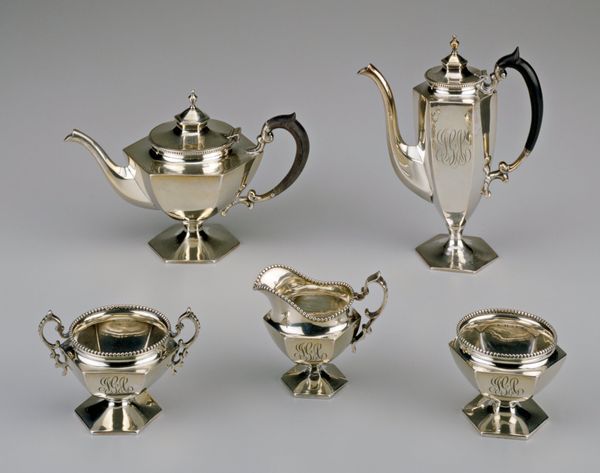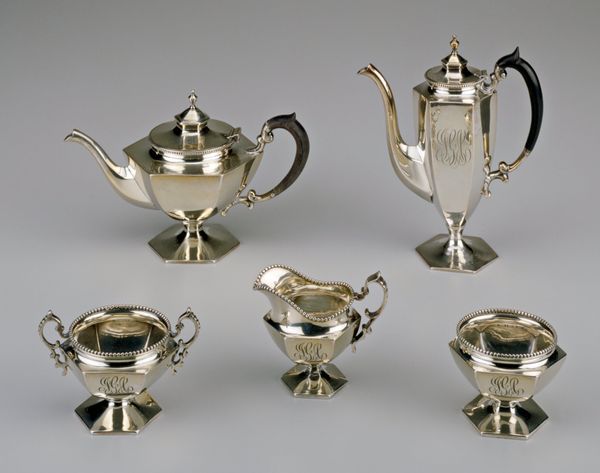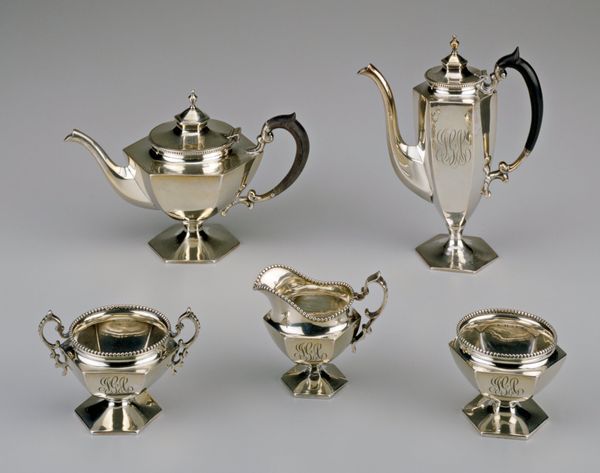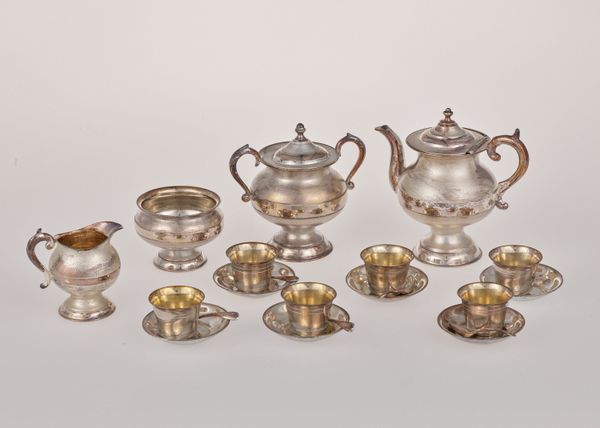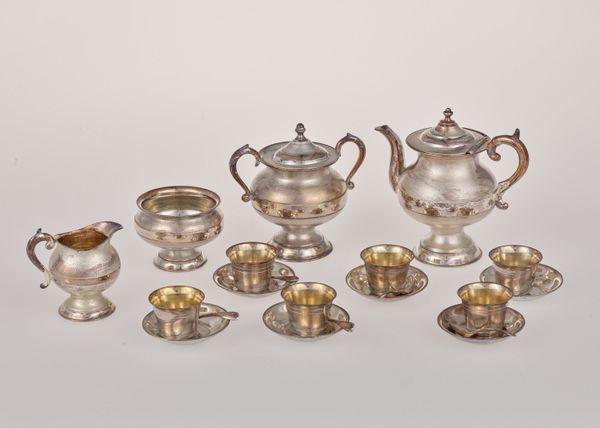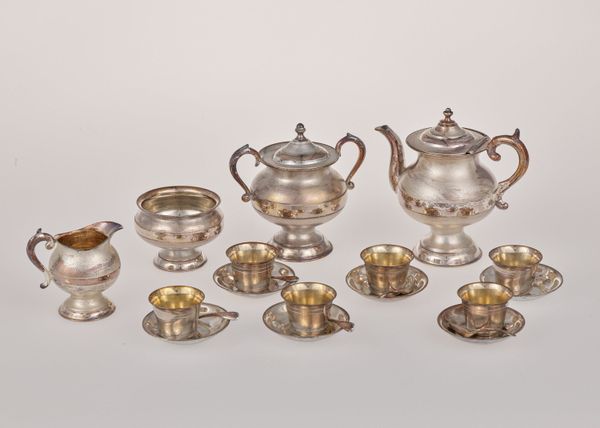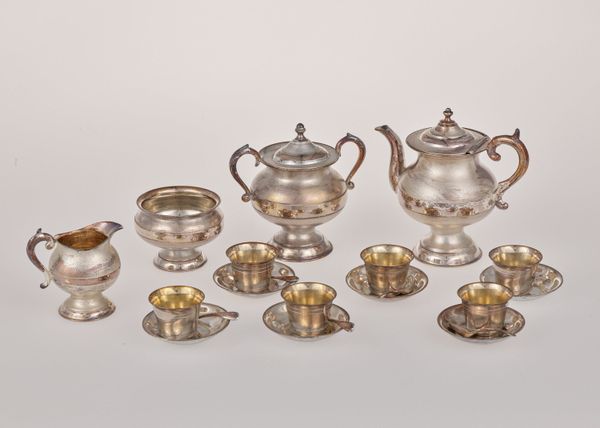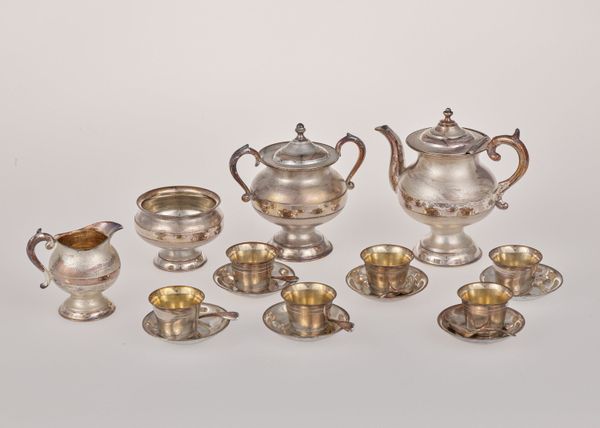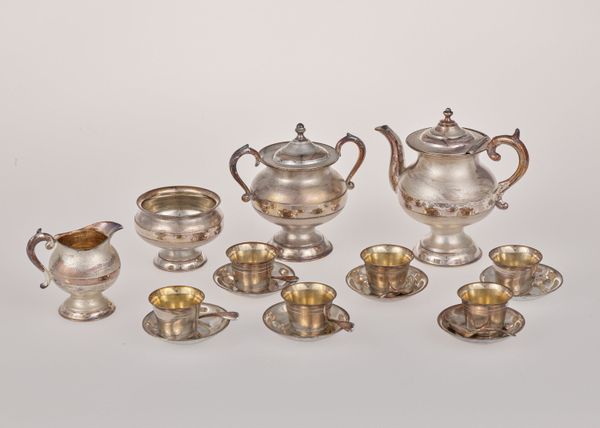
silver, metal, ceramic
#
silver
#
metal
#
ceramic
#
ceramic
#
decorative-art
Dimensions: 4 1/16 x 6 3/16 x 3 13/16 in. (10.32 x 15.72 x 9.68 cm)
Copyright: No Copyright - United States
Editor: Here we have Grant Wood's "Sugar Bowl" from around 1914, made of silver and ceramic. I’m struck by the sheen of the metal and how it reflects light. What draws your eye when you look at this piece? Curator: For me, the allure lies in deconstructing its materiality. Look at the labor involved in crafting these objects. The extraction of silver, its refinement, the shaping of both the metal and ceramic – each step implicates socio-economic systems. How do you think this contrasts to mass-produced tableware today? Editor: I see your point. It highlights the immense labor behind what we might see as a simple household item. What does it say about the context it was created in? Curator: It speaks volumes about consumption and class. The ability to commission such a set speaks to a specific social stratum. But let's not forget the skill involved; notice the subtle hammered texture of the silver. It's not just about function, but about displaying artisanal craftsmanship. Editor: So you see it less as a utilitarian object and more as a symbol of the social and economic structures that enabled its creation? Curator: Precisely! We should also consider how something like this blurred boundaries between high art and craft, challenging traditional hierarchies that favored painting and sculpture. Do you agree with that assessment? Editor: That's fascinating. I hadn't considered how decorative arts pushed those boundaries. It makes me think about who was using these objects, and whose labor made them possible. Thank you for making me see that. Curator: Absolutely, it’s essential to delve beneath the surface appearance. The history of objects reveals a powerful narrative about society and the production of goods. I learned much from our exchange today as well.
Comments
minneapolisinstituteofart almost 2 years ago
⋮
In 1914, the American regionalist painter Grant Wood and Kristopher Haga, a Norwegian silversmith, both students at the Kalo metalware shops in Chicago formed the Volund Craft Shops in Park Ridge, Illinois. The enterprise, named for the Norwegian god of silversmithing, only lasted eighteen months due to insufficient funds. The shops produced small gold and silver items such as jewelry, boxes, and buckles. Hollow ware forms such as this coffee and tea set were rare for the shop and it is among the most ambitious productions ever undertaken by Wood and Haga.
Join the conversation
Join millions of artists and users on Artera today and experience the ultimate creative platform.
